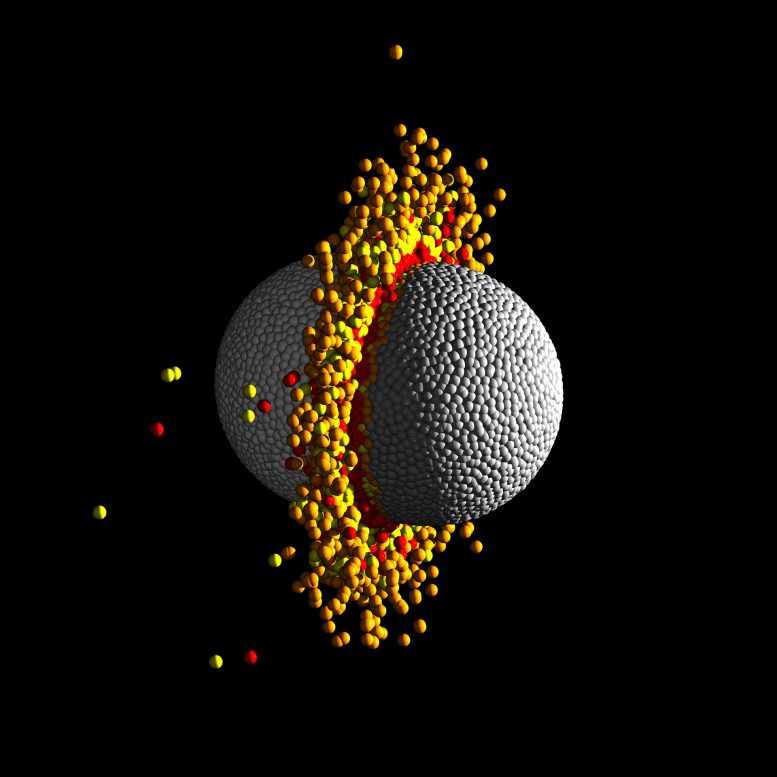
The figure shows one frame from the middle of a hydrodynamical simulation of a high-speed head-on collision between two 10 Earth-mass planets. The temperature range of the material is represented by four colors grey, orange, yellow and red, where grey is the coolest and red is the hottest. Such collisions eject a large amount of the silicate mantle material leaving a high-iron content, high-density remnant planet similar to the observed characteristics of Kepler-107c. Credit: Z. M. Leinhardt and T. Denman (University of Bristol)
Two of the planets which are orbiting the star Kepler 107 could be the result of an impact similar to that which affected the Earth to produce the Moon. An international team whose members include a researcher from the Instituto de Astrofísica de Canarias and the University of La Laguna are publishing the results of this work today in the journal Nature Astronomy.
Since 1995 the first extrasolar planet was discovered almost 4,000 planets have been found around the nearest stars. This allows us to study a large variety of configurations for these planetary systems. The evolution of the planets orbiting other stars can be affected, mainly, by two phenomena: the evaporation of the upper layers of the planet due to the effect of the X-rays and ultraviolet emitted by the central star, and by the impacts of other celestial bodies of the size of a planet.
The former effect has been observed a number of times in extrasolar systems, but until now there has been no proof of the existence of major impacts, as has apparently occurred in the Kepler 107 system.
The central star, Kepler 107, is a bit bigger than the Sun, and has four planets rotating around it; it was the two innermost planets that drew the interest of astrophysicists. Using data from NASA’s Kepler satellite and the National Galileo Telescope (TNG) at the Roque de los Muchachos Observatory (Garafía, La Palma, Canary Islands), the team determined the parameters of star, and measured the radii and masses of these planets. Although the innermost two have similar radii their masses are very different. In fact, the second is three times denser than the first.
The extraordinarily high density of the planet Kepler 107c is more than double that of the Earth. This exceptional density for a planet has intrigued researchers and suggests that its metallic core, its densest part, is anomalously big for a planet.
This would be still considered normal if it were not for the prediction that photo-evaporation causes the densest planet in a system to be the nearest to its star. To explain how it is possible that, in this case, the nearest has only half the density of the second, the hypothesis was proposed that the planet Kepler 107c was formed as the result of a major impact. This impact must have ripped away its outer layers, thus leaving the central core as a much bigger fraction than before. After tests carried out via simulations, this hypothesis seems to be the most likely.
This study will allow us to better understand the formation and evolution of exoplanets. Specifically, it picks out the importance of the relationship between stellar physics and exoplanetary research. “We need to know the star to better understand the planets which are in orbit around it,” says Savita Mathur, a researcher at the IAC in Tenerife, and one of the authors of the article. “In this study, we made a seismic analysis to estimate the parameters of the star which hosts the planet. Asteroseismology is playing a key role in the field of exoplanets because it has been shown that it is one of the best methods for a precise characterization of the stars.”
That is why during the past decade it has become one of the main methods for characterizing stars, and it will remain so in the coming years, thanks to the space missions for discovering exoplanets: TESS (NASA) and PLATO (ESA).
Reference: “A giant impact as the likely origin of different twins in the Kepler-107 exoplanet system” by Aldo S. Bonomo, Li Zeng, Mario Damasso, Zoë M. Leinhardt, Anders B. Justesen, Eric Lopez, Mikkel N. Lund, Luca Malavolta, Victor Silva Aguirre, Lars A. Buchhave, Enrico Corsaro, Thomas Denman, Mercedes Lopez-Morales, Sean M. Mills, Annelies Mortier, Ken Rice, Alessandro Sozzetti, Andrew Vanderburg, Laura Affer, Torben Arentoft, Mansour Benbakoura, François Bouchy, Jørgen Christensen-Dalsgaard, Andrew Collier Cameron, Rosario Cosentino, Courtney D. Dressing, Xavier Dumusque, Pedro Figueira, Aldo F. M. Fiorenzano, Rafael A. García, Rasmus Handberg, Avet Harutyunyan, John A. Johnson, Hans Kjeldsen, David W. Latham, Christophe Lovis, Mia S. Lundkvist, Savita Mathur, Michel Mayor, Giusi Micela, Emilio Molinari, Fatemeh Motalebi, Valerio Nascimbeni, Chantanelle Nava, Francesco Pepe, David F. Phillips, Giampaolo Piotto, Ennio Poretti, Dimitar Sasselov, Damien Ségransan, Stéphane Udry and Chris Watson, 4 February 2019, Nature Astronomy.
DOI: 10.1038/s41550-018-0684-9

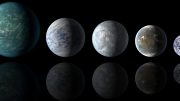
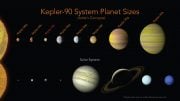
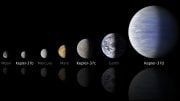
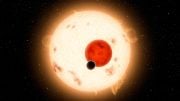
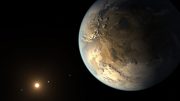
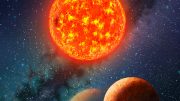
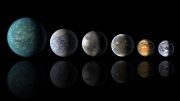
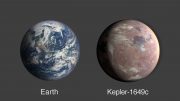
Be the first to comment on "Researchers Discover Planet-Forming Collision in Kepler 107 System"